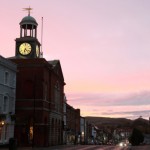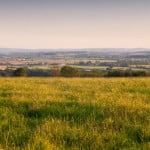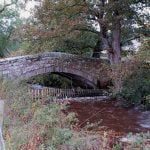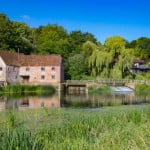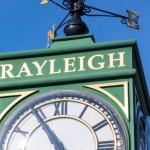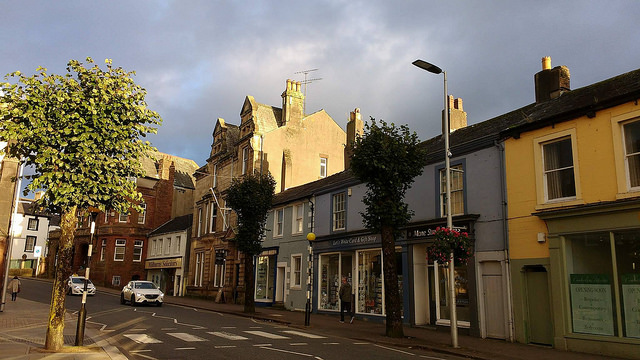
Cockermouth – The Little Cumbrian Market Town With The Big History
Looking for a holiday with a base on the edge of the Lake District which has oodles of history, connections to a few famous people and even has a local brewery? Then Cockermouth will tick all those boxes! Still not enough well how about Cockermouth Castle, how many small market towns can boast this? Anyway, this quaint market town is situated in Allerdale, West Cumbria, and derives its name from its geographical position, which is at the confluence of the River Derwent, and its tributary, the River Cocker.
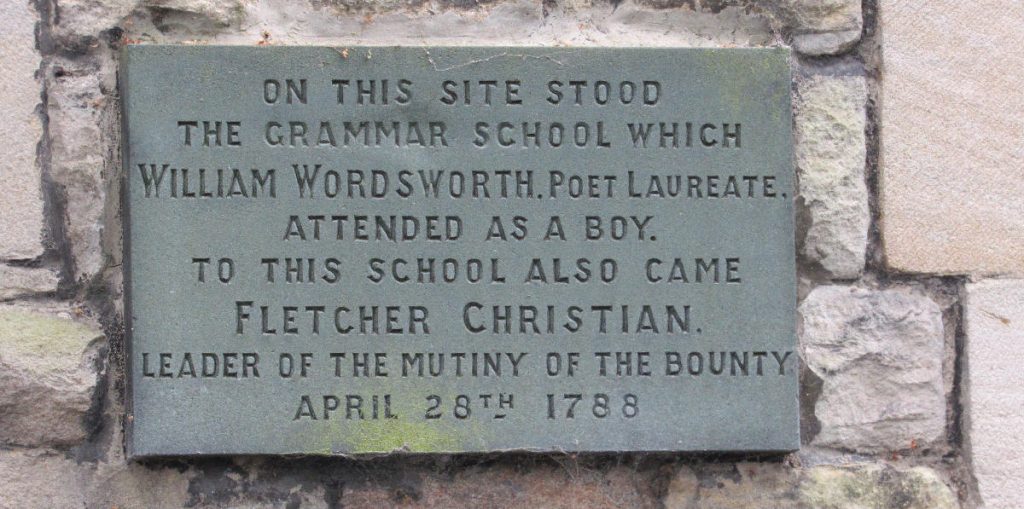
Image: Joyce Nelson/Shutterstock.com
While it gives all the impression, feel and atmosphere of ‘Lakes’ town, it doesn’t legitimately qualify, as it lies just outside the boundary of the Lake District National Park. However, what it does qualify for, according to those who visit, is that it is one of the friendliest places in the county. It is also quite homely too with a relatively small population estimated at 8,761 in the 2011 UK official census. So is this your ideal destination or dare we say place to live? Well read on and you will see it has loads to offer both in and around the town. Ok, where to start I know, how about a little bit of local history!
Go to the Cumbria Business Directory
A Fleeting History Of The Town
The Romans were the first known settlers in the area, as they built a fort (Derventio) at the adjoining village of Papcastle. This was to protect the crossing of the River Derwent, which was on a major supply route for Hadrian’s Wall.
The town was further developed under the Normans, who initially occupied the old Roman fort. Starting around 1360, they went on to build Cockermouth Castle on the banks of the River Derwent. Regrettably, only the remnants of the castle remain today, as it was largely destroyed during the 15th century feuding between the Scots and the English.
With the advantage of the nearby fast-flowing River Derwent, Cockermouth essentially developed as a mill town, along with agriculture. Records show that the town had a mill as early as 1156. A market charter was granted to the town in 1221 by King Henry III. The market has remained important to the town ever since.
Famous People
Quite remarkably, the town’s three most celebrated sons were all born in the same decade, the 1770’s. Probably the best known is the ‘romantic’ poet William Wordsworth, who was born in Cockermouth in 1770. The large Georgian house in Main Street, which was his childhood home, is now in the care of the National Trust. Fletcher Christian, who in 1789, led the notorious mutiny on board the Royal Navy ship, HMS Bounty, was born in 1764, about a mile from the town at Eaglesfield. Mostly due to a favourable portrayal by Hollywood, history seems to have treated Christian, kindly. John Dalton, the originator of Atomic Theory, was one of the most eminent scientists of his generation. He was also born at Eaglesfield in 1766 and attended school with Fletcher Christian.
The Industrial Age
By the time the mid-19th century arrived, there were over forty industrial establishments in the town, which included mills, factories, tanneries and workshops. The old town, originally built in medieval times, though substantially rebuilt during the Georgian period, had new buildings added during the Victorian era, when any available plots were mostly filled.
With the approaching era of steam power, industry within the town itself began to decline. However, the coming of the railway and the emergence of the Victorian traveller, together with the growing fame of Wordsworth, meant that Cockermouth became a destination for the country’s early tourists.
The town’s original railway station was built in 1847 on the line to Workington to service the growing mining industry in the area. The line closed when the Cockermouth, Keswick and Penrith Railway was built in 1864. The railway station was subsequently relocated, opening to passengers in January 1865. After years of little use, the station finally closed in April 1966. The building was demolished when the A66 was constructed on the railway’s trackbed between Cockermouth and Keswick.
A Cockermouth claim to fame is that it was the first town in Britain to have tested the viability of electric lighting. In 1881, six impressive electric lamps were set up in the town centre. However, in operation, the lamps were found to only work intermittently, which prompted an eventual return to gaslight.
Modern Era Cockermouth
Much of the old market town area has retained its distinctive medieval layout. The present-day shops and houses, along the broad main street, have been rebuilt a number times since the town was first laid out. However, they still mostly occupy the same long narrow burgage* plots dating back some 800 years.
The Georgian terraced housing around the Market Place, Kirkgate and other areas are mostly well preserved. Most of the buildings are of traditional single thick wall stone construction with ‘Skiddaw’ slate roofs. Cobbled paving and old-style ‘back’ lanes in other parts of the town, add further to the old world ambience.
The three main shopping areas in the town centre are Main Street, Market Place and Station Street. Reflecting the importance of tourism, there’s numerous and a diverse range of shops for a small town, many of them independents. Most of the town’s old pubs have survived the rout of closures across the county brought on by changing times. What was considered the traditional pub of only a couple of decades ago, won’t cut the mustard in today’s competitive market. Thus, most pubs have had a complete makeover and now serve pretty decent food, to boot.
Cockermouth Floods
Major flood events have occurred in the town most recently in 2005, 2009 and 2015. Thus, much of the town centre has undergone refurbishment is recent times. The restoration works have greatly improved the aesthetics of the town centre, enhancing both street lighting and pedestrian facilities. Private enterprises have all played their part by improving the facades to shops, pubs, restaurants, cafes and other businesses. Permanent displays and exhibits celebrating the town’s history have also been incorporated into the town centre improvements, resulting in a tourist friendly hub.
*‘burgage’’ – belonging to the burgess, a clique of the medieval well to do.
Getting there!
The easiest way to get to Cockermouth is by private car, in which case you would turn off at Junction 40 (Penrith) on the M6 Motorway, then follow the A66 westwards for a distance of around 30 miles (48 km).
If you’re travelling by train, then the nearest railway station to the town is Maryport on the Cumbrian Coast Line. Alternatively, you could travel a little further down the coast to Workington, where the bus service to Cockermouth is probably a little better.
You could also get to the town using the local bus service, from either Carlisle or Penrith, which both have West Coast mainline train stations. Local bus services connecting Cockermouth to Workington, Maryport, Penrith and Carlisle, are operated by Stagecoach North West. The nearest major airport is Newcastle Airport, although a small local airport in due to open at Carlisle sometime in 2019.
Places to see!
Wordsworth house
William Wordsworth was born on 7 April 1770 in a large Georgian house in Cockermouth, now called Wordsworth House. His father John was estate agent to Sir James Lowther, who owned the house. Presented as it would have been when William lived there as a child with his parents, his sister Dorothy and three brothers, Wordsworth House and Garden, offers a chance for all the visitors to experience life in the 1770s.
The house has knowledgeable guides on hand during opening hours. On Wednesdays and Saturdays in school term-time and throughout the school holidays, there’s a maid cooking food from recipes of the period in the kitchen. You can even sample the food! Most of the things in the house are replica rather than original so the whole experience is very much hands-on rather than the normal restrictive encounter you may have at other museums. There is also a permanent exhibition of William’s Lakeland legacy and his significant role in the founding of the National Trust. The riverside garden is packed with 18th-century varieties of vegetables, fruit, herbs and flowers, and there are even a few chickens, of breeds typical of the day, hanging around. Last but not least, there’s also the customary gift shop and café on the premises.
Note that the Wordsworth House is closed during the winter months.
Jennings brewery
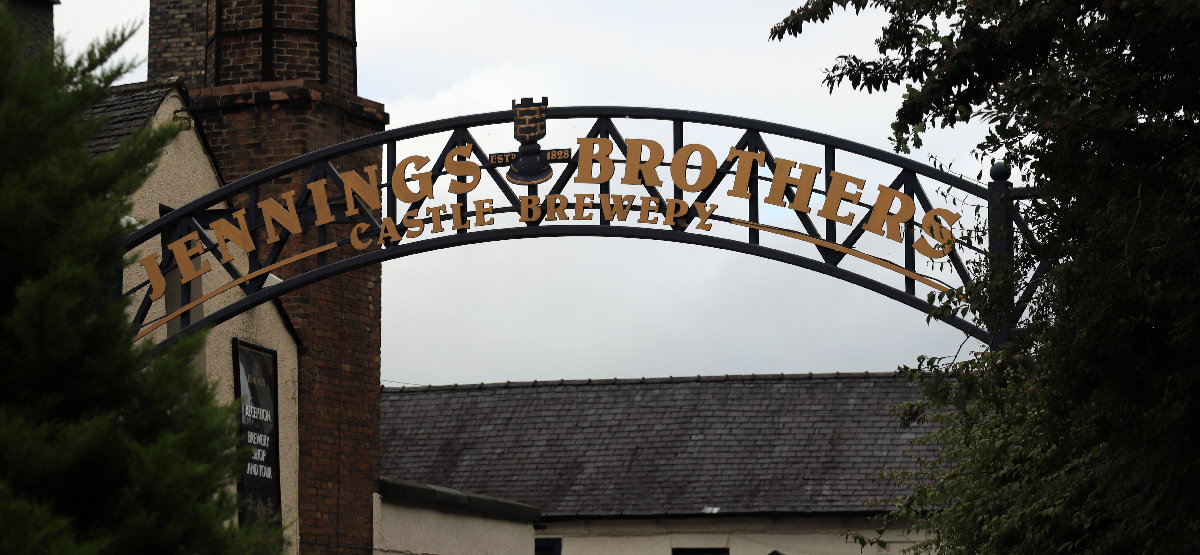
Image: Joyce Nelson/Shutterstock.com
Cockermouth is home to Jennings Brewery, which offers guided tours around its buildings, explaining the various processes involved in brewing traditional beer. The brewery is located next to Cockermouth Castle on the banks of the River Derwent. You obviously get to sample some of the produce during the tour and there’s also a shop selling their various beers, clothing and other merchandise. Occasionally, the brewer provides the opportunity to take a ride in a carriage, pulled by shire horses.
Cockermouth Castle
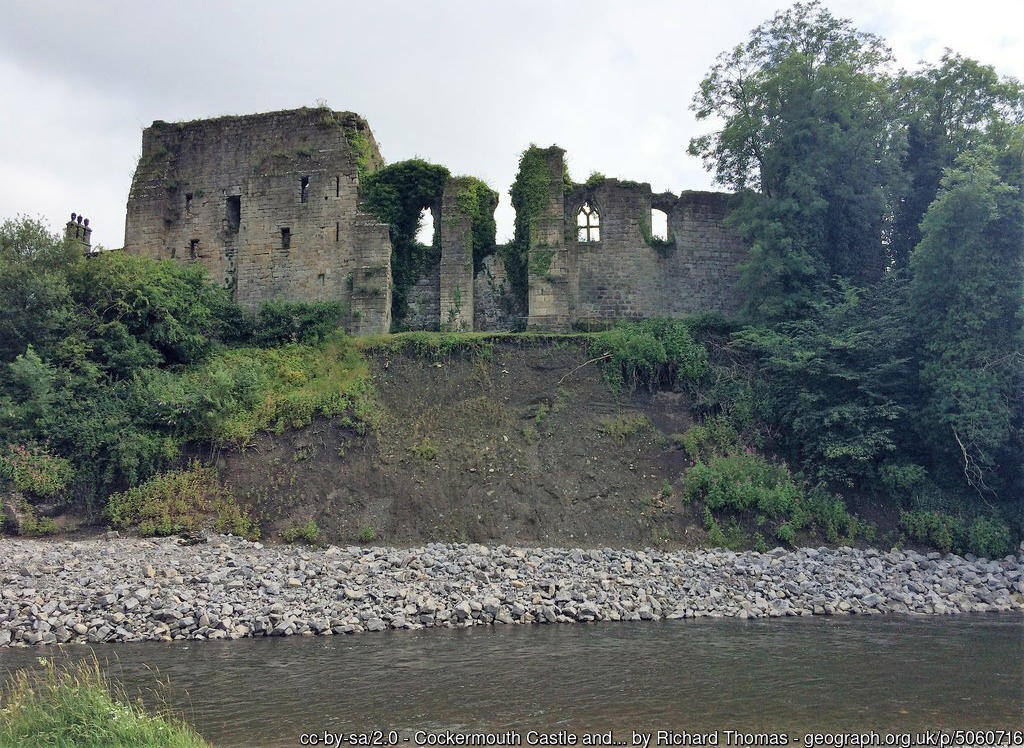
Cockermouth Castle, dating back to 1360, is a sizeable but largely ruined Norman castle, although it does have preserved dungeons. Built at the confluence of the Cocker and Derwent rivers, the castle has a leaning tower to rival the one at Pisa! Unfortunately, the castle is privately owned (by Lady Egremont), so is normally closed to visitors. However, it is open for a handful of days during the town’s Georgian Fair and the annual Midsummer Festival.
Elva Plain Stone Circle
Elva Plain Stone Circle lies on the southern slope of Elva Hill. The view to the east from the hill is across Bassenthwaite Lake, dominated by Skiddaw, Situated on a level terrace on the hillside, the stones form a 40 metres diameter circle. However, only 15 stones of the original 30 remain. The tallest stone is about a metre high.
Elva Hill is sometimes known locally as Fairy Hill. It’s thought the name is derived from an old Viking name, which meant ‘place of the elves’. The site is thought to be linked to the trade in axes, that’s been estimated as dating back to late neolithic times. The circle is on private ground belonging to Elva Farm but may be approached on a footpath from the Cockermouth to Higham Hall road.
Things to do!
Eating out and drinking
Cockermouth has an abundance of places to eat and drink. Most restaurants and pubs in and around the town serve British cuisine. And a good proportion of these will also include Cumbrian fare on their menu. However, you will also be able to find Indian, Chinese, Italian, Turkish and other restaurants around the town. Whether you’re looking for fine dining or just pub grub, I think it would be fair to say that the town offers pretty good tucker at a more than reasonable price.
Many of the town’s eating establishments like to emphasis their use of local produce. There’s an annual event held every September in the town which helps with this promotion, the Taste Cumbria Festival. It has helped cement the town’s reputation as a bit of a food haven. It was recently recognised by the Guardian newspaper has been one of the country’s best food and drink festivals.
If you like to socialise you find there’s plenty of pubs and bars around town. You find that most of these serve food and some host live music and/or quiz nights. If you like proper beer, then you’ll find Cockermouth is paradise, as almost all establishments serve up the local legendary Jennings ‘real’ ale along with a mass of other beers.
Shopping In Cockermouth
Cockermouth folk have largely rejected the coup of the high street by the major shopping chains. Given the town’s strong identity of community, they have instead, perhaps not unsurprisingly, choose to stick by the many individually family-owned shops and businesses. While there are a few national chain shops, the town prides itself on providing a unique shopping experience. You’ll find an array of excellent quality wares and produce in its distinctive shops, i.e. from antiques to local foodstuff, all sold with good old-fashioned courtesy service.
An example of such a shop would be the totally unique J.B. Banks & Son Ltd, in Market Place. It’s been trading as a traditional ironmonger in the town for more than 180 years. That in its self, in this modern era, would make the place quite outstanding. However, at the rear of the shop, there is a small heritage museum housed in the original Georgian workshop, displaying a range of artefacts from a bygone era. Even better – entrance is free!
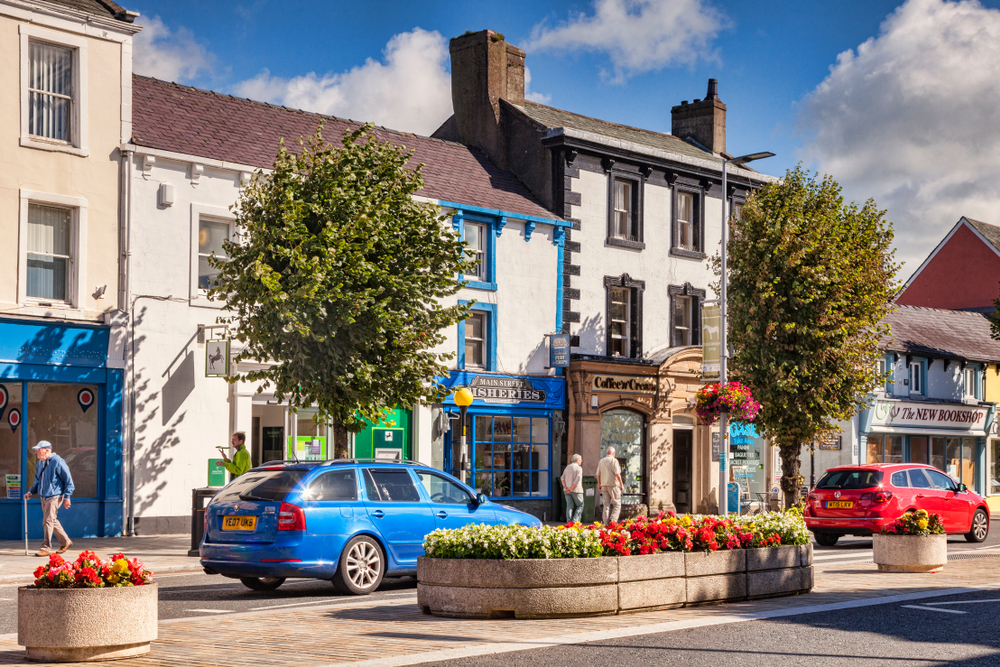
Image: travellight / Shutterstock.com
Main Street, Cockermouth
Kirkgate Arts Centre
The Kirkgate Centre is the hub for the town’s scheduled arts programme of events, which includes theatre, festivals and cinema. Both art house and main stream films are regularly screened. Quality musical events also feature in the centre’s busy arts programme.
Bassenthwaite Lake
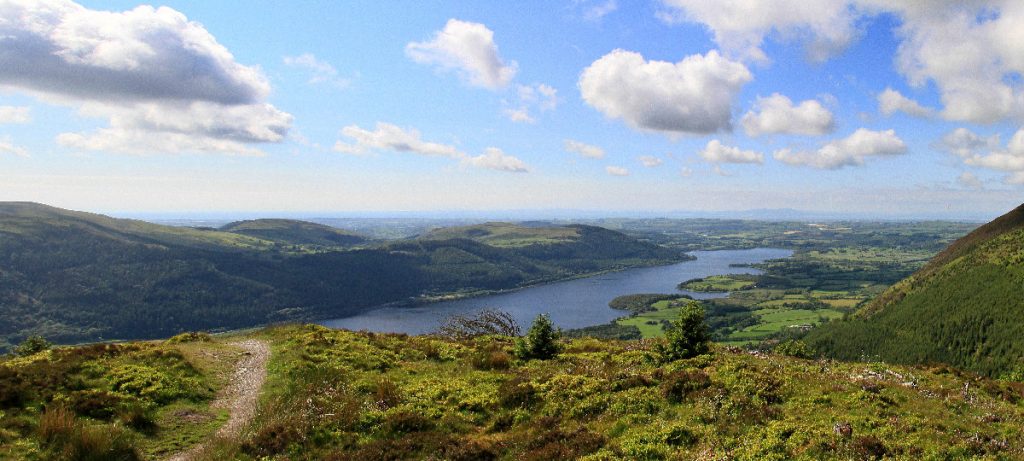
Image: Seferix/Shutterstock.com
Bassenthwaite Lake is 6400 m long and a maximum of 1100 m wide. It borders the A66 trunk road, about 4 miles (6 km) west of Cockermouth, en-route to Keswick. It’s one of the largest bodies of water in the Lake District and the only one that is actually named as a ‘lake’. Its certainly not one of the most popular lakes, since it’s situated on the outer edge of the Lake District. However, it does have a number of excellent hiking trails and can be a good place to catch sight of the relatively rare osprey, which are usually resident at the lake during the spring and summer months. Dodd Wood located on the east side of the lake is a particularly good spot for hiking and has a thriving population of Red Squirrels.
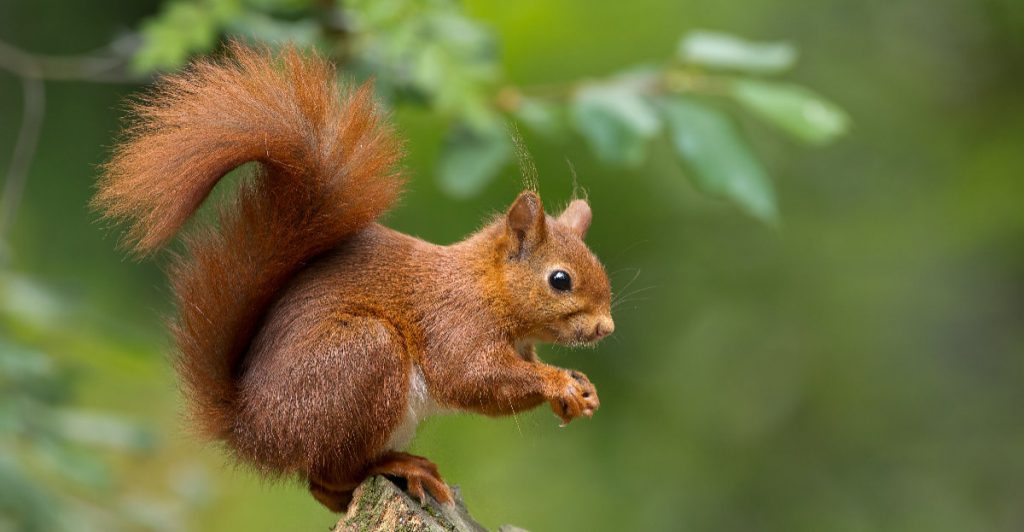
Image: Menno Schaefer/Shutterstock.com
You can park for free at the various laybys dotted along the lakeside, and at the northern end of the lake, at Banks Point. On the other side of the lake at Dodd Wood, there is pay and display parking available.
Hiking and Biking!
With Cockermouth being on the edge of the North Lakes there are obviously lots of choice for walkers and cyclists. There is also the Cumbrian Way, which is a footpath set entirely in Cumbria. Running from Ulverston to Carlisle, it passes through Cockermouth. The total length of the route is around 70 miles, with the majority passing within the periphery of the Lake District National Park.
Whinlatter Forest Park is only about 5 miles away and has lots of walking trails to explore. It is also home to the longest purpose-built mountain bike trails in the Lake District. Ennerdale forest is about 12 miles from Cockermouth and again provides plenty of walking and mountain bike trails, although the latter are not purpose-built.
If you prefer to stick to the road, then the West Cumbria Cycle Route is a 72-mile long network of cycle paths which links off-road sections with the minor road system. The cycleway links Cockermouth, Workington, Distington, Whitehaven, Cleator Moor and Ennerdale. The Coast to Coast (C2C) from Whitehaven/Workington to Sunderland also passes through Cockermouth. The route is a total length of 136 miles and is the most popular leisure cycle route in the UK.
There are also plenty of local walks both around Cockermouth itself. Just a little further afield, you’ve also got Buttermere, Ennerdale and the Solway Coast to mention but a few other possibilities for walkers. You will be able to get the information on these at Cockermouth’s local Tourist Information Centre in Main Street.
Go Fishing!
The River Derwent is highly rated in the angling world, perhaps the Cocker a little less so, as fish stocks there have declined in recent years. It’s possible to catch salmon, brown trout and sea trout in their waters. You can also fish at Cogna Moss, a disused reservoir, about 12 miles out of Cockermouth. You will need to obtain a day-pass or visitors permit from Cockermouth Angling Association (CAA) to fish at all three sites. Certain rules and regulations are enforced by the CAA in an effort to maintain fish stocks. Information and fishing permits are available from Cockermouth’s Tourist Information Centre.
Where to stay?
Cockermouth’s a great place to stay for a few nights if you want to explore the North Lakes. There’s enough variety in accommodation in and around Cockermouth to suit most likes and pockets. Hostel accommodation is probably not the best deal unless you’re travelling on your own. Cockermouth’s own council-owned hostel has recently been sold off privately. Buttermere is one of the nearest hostels to Cockermouth, but that’s about 10 miles away.
The next rung on the local accommodation ladder is guesthouses, travel lodges and small family hotels. You also have holiday homes that could work out as a good deal, if they have maximum occupancy. That’s commonly 3 – 6 people. Some also have minimum stays of 2 or 3 nights.
Accommodation in Cockermouth is generally a little dearer than that of a similar standard set a little outside the town. All things considered, the best hotels in and around Cockermouth tend to be reasonably priced. Ballpark figures for accommodation in and around Cockermouth would be:
Shared dormitory in a Hostel: £30
Guesthouse, travel lodge or small hotel: £40 – £60
Holiday homes: £250 – £500 (3 to 6 people)
Top-end hotels: £90 – £175
The Cockermouth Quiz
So there we have it our quick guide to the lovely town of Cockermouth. Don’t forget to check out our Cockermouth Business Directory for more information on accommodation and places to visit and while you are here have a look at our other Cumbrian guides for inspiration on other places to visit while you are in this part of the country.

